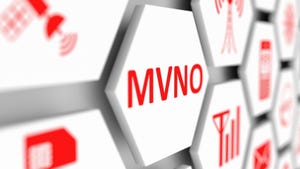12 top OSS/BSS trends for 2012
2012 promises to be an exciting year in the OSS and BSS sectors as the industry moves into the next phase of support software deployment. Despite the economic gloom which still hangs over many of the world’s major economies, there is room for optimism in most of the geographical regions as operators in the mature markets begin to explore the possibilities of policy-based on-line charging (OLC)
January 10, 2012

By Peter Dykes
2012 promises to be an exciting year in the OSS and BSS sectors as the industry moves into the next phase of support software deployment. Despite the economic gloom which still hangs over many of the world’s major economies, there is room for optimism in most of the geographical regions as operators in the mature markets begin to explore the possibilities of policy-based on-line charging (OLC).
In the emerging markets the growing requirement for more complex rating and billing functionality also promises rich pickings for those vendors with the right products. Meeting these challenges is not a matter of choice for most operators however, particularly for those who have or intend to embrace LTE, because having the bandwidth necessary to offer mobile broadband data services is not enough without the support systems to fully exploit the technology.
In all cases, the marriage of high-speed IP-based network infrastructure and the new generation of IT support systems will ultimately lead to a greater focus on areas such as customer experience, business intelligence and innovative ways of dealing with network congestion.
One of the most exciting developments in 2012 will be Increase in demand for policy-based OLC as operators begin to exploit some of the opportunities for innovative service development offered by the technology. There is a danger however that the speed of this development will be hampered by operators’ apparent inability to get their network and service creation staff working together cohesively and resolve issues such as who owns the service model.
There will be further development of tiered services based on speed, volume and time of day as a defensive strategy against network congestion.
Operators in mature markets will focus more closely on the monetization of mobile broadband data services, which in turn will drive other areas of growth, such as Facebook and other social networking-based plans, hybrid accounts and customer self-provisioning.
As the year progresses, there will also be an increase in demand for Diameter-based routing as signaling becomes a problem, particularly in the Radio Access Network (RAN) because unlike their predecessors, LTE networks are subject to 100% smartphone penetration from day one.
An intriguing development is the trend towards the use of SaaS in the OSS/BSS sector, driven by the demand for more complex service support and the requirement to squeeze the last bit of investment from legacy systems. It is possible that the perceived CAPEX and OPEX savings gained from using cloud-based systems could add further momentum to this trend, given the current economic climate; however issues around latency and security will need to be addressed.
Vendors of network optimization software could see a rise in demand for their products, in particular those relating to RAN congestion as femtocells and other small-cell technologies are increasingly used in a traffic management role.
2012 is also likely to bring the beginnings of an overall improvement in some areas of the overall customer experience as increasingly larger volumes of more granular data becomes available for use in call centers and pro-active CRM.
Demand for analytical software for business intelligence will be slower to develop than at first thought, as operators concentrate on more defensive strategies; however the threat of increasing churn will ensure the topic doesn’t fall completely off the radar. As more network, service and RAN data becomes available, operators will begin to understand the significance of it and begin to exploit it more than at present.
It will be more important than ever that vendors are able to demonstrate beyond all doubt that their products will integrate quickly and easily with those of other vendors, even when offering end-to-end solutions of their own. Operators are beginning to feel that although they may source systems from a single vendor, they want the option of being able to incorporate individual platform elements from other vendors as and when they see fit without incurring high integration costs.
The year will see a rise in demand for support systems specifically tailored for M2M services. The nature of the support required for M2M service implementation is still largely undefined as the sector has the potential to require many different billing and charging models as well as varying traffic requirements.
The continuing need to integrate new IT infrastructures with legacy systems will maintain a strong demand for mediation products, as will the desire to maintain high levels of revenue assurance in the face of increasingly complex service models.
Looking at regional markets, Africa could be a strong growth area for billing and rating systems, as many of the smaller operators reach market saturation and begin looking for something more complex than an Excel spreadsheet. Latin America, though still essentially an emerging market, is perhaps more developed than most, as evidenced by the success of companies such as Sandvine in that region. Some of the newer charging and billing platforms might seem like a big investment to emerging operators, but they could prove to be cost-effective in the long run, particularly for start-ups without legacy systems as there are fewer integration issues to be addressed.
Read more about:
DiscussionYou May Also Like








.png?width=300&auto=webp&quality=80&disable=upscale)


_1.jpg?width=300&auto=webp&quality=80&disable=upscale)